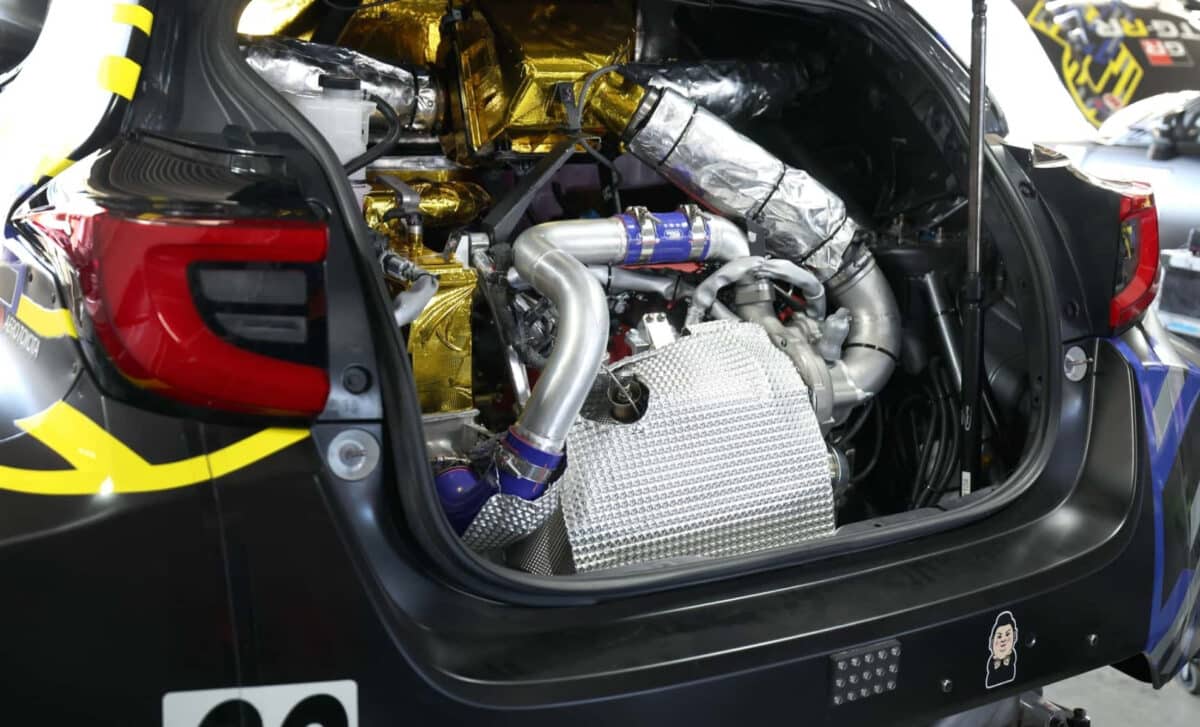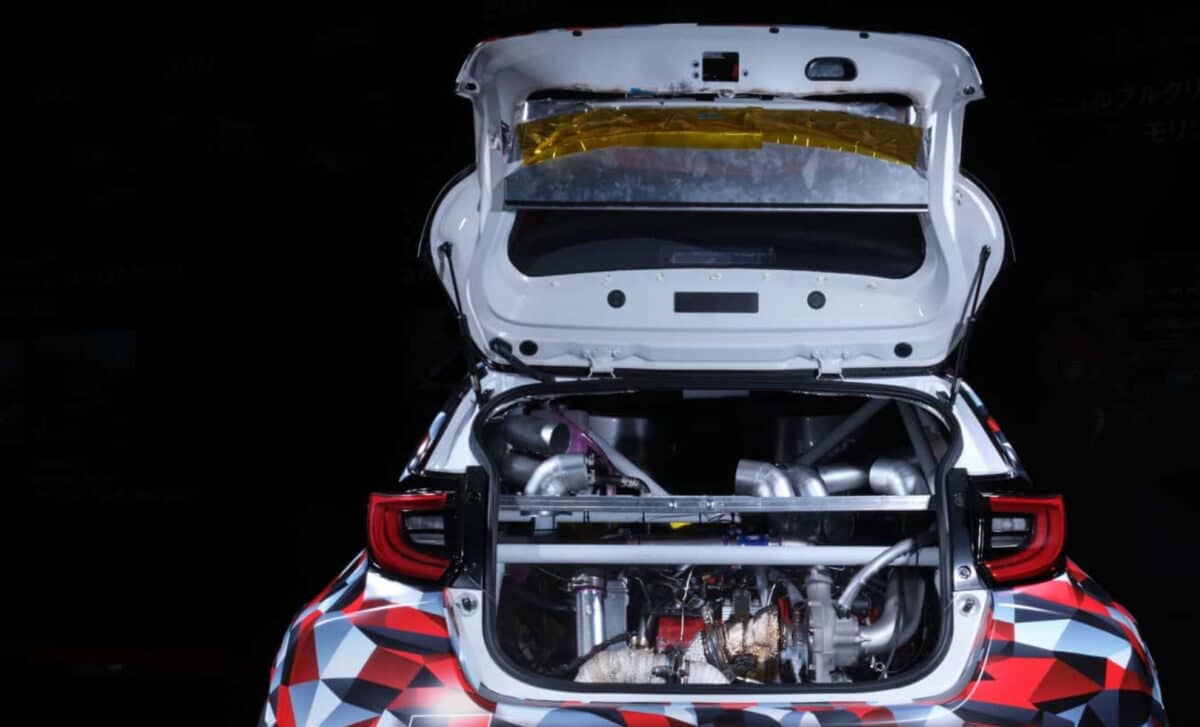The vehicle housing this experimental engine, a mid-engine GR Yaris, was first unveiled at the Tokyo Auto Salon. It’s a significant departure from the traditional front-engine, three-cylinder GR Yaris, showcasing a bold rethinking of design and dynamics. Toyota initially planned to race it earlier in the year, but unresolved development challenges forced a delay. Now, after a successful outing in October at the Okayama Circuit, it’s clear the project is moving forward.
Akio Toyoda, chairman of Toyota and a known enthusiast for motorsport, personally drove the prototype during the sixth round of Japan’s Super Taikyu Series. He placed third overall, providing not only a marketing coup but a strong vote of confidence in the viability of the platform.
A New 2.0-Liter Engine Aimed at Endurance and Flexibility
According to Motor1, the new engine—known internally as the G20E—shares lineage with Toyota’s G16E, the three-cylinder unit found in models like the GR Corolla, GR Yaris, and the Lexus LBX Morizo RR. Unlike its predecessor, though, this four-cylinder version increases displacement and performance significantly.
Toyota confirmed the engine ran on gasoline during the race but is being developed to handle E20 fuel, a mix of gasoline and 20% ethanol. This flexibility could allow Toyota to adapt the engine for different fuel standards in various markets. The G20E was specifically designed with modularity in mind: it can be mounted in both longitudinal and transverse orientations, making it compatible with front- and mid-engine layouts.
The manufacturer hasn’t committed to a production timeline. Still, the endurance race marked an important milestone. Engineers reported no significant issues during the car’s three-hour track session, indicating solid reliability even under demanding conditions.

Engine Architecture Focused on Packaging and Efficiency
First announced in May 2024, this powertrain belongs to a new generation of compact internal combustion engines. Toyota plans to reduce overall engine volume, weight, and height—an approach that will improve vehicle packaging and aerodynamic performance. These reductions, the company says, will make way for lower hoods and optimized airflow.
A prototype Lexus IS was used to test the 2.0-liter engine in a rearward-mounted position. The goal was to lower the center of gravity, ultimately enhancing driving dynamics. The Financial Times reported that this lineup of new engines is scheduled to appear in consumer vehicles beginning in late 2026, though Toyota hasn’t confirmed this timeline directly.
Beyond the turbocharged 2.0-liter, Toyota is also preparing 1.5-liter variants—both naturally aspirated and turbocharged—that adhere to the same lightweight and compact principles. The overarching goal is to keep combustion engines relevant while refining them for improved environmental and performance outcomes.
The GR Yaris Gets Major Drivetrain Upgrades
The test vehicle—nicknamed GR Yaris M—did more than just showcase a new engine. It also introduced a reengineered four-wheel-drive system offering greater adjustability than its predecessor. Drivers can now shift torque between 40:60 and 50:50 front-to-rear, whereas the existing model could only go from 60:40 to 30:70.
This evolution in torque distribution suggests Toyota is looking to offer more granular control to performance enthusiasts, especially in motorsport or extreme driving scenarios. The integration of this system in a mid-engine platform like the Yaris M is an uncommon configuration in Toyota’s portfolio, pointing toward experimentation with layout and balance.
According to Car Watch Japan, Toyota sees these technological steps as part of a broader push toward making combustion engines more exciting while exploring alternative fuels and drivetrain layouts. Akio Toyoda himself commented after the race that the company had “definitely taken a step forward,” but refrained from giving any production hints or deadlines.
These developments align with broader hints from the company about reviving beloved nameplates like the Celica and Supra, and possibly launching a GT3-derived road car in the coming year. All signs suggest that, while the industry rushes toward electric mobility, Toyota is carving out a parallel path for driving enthusiasts.









